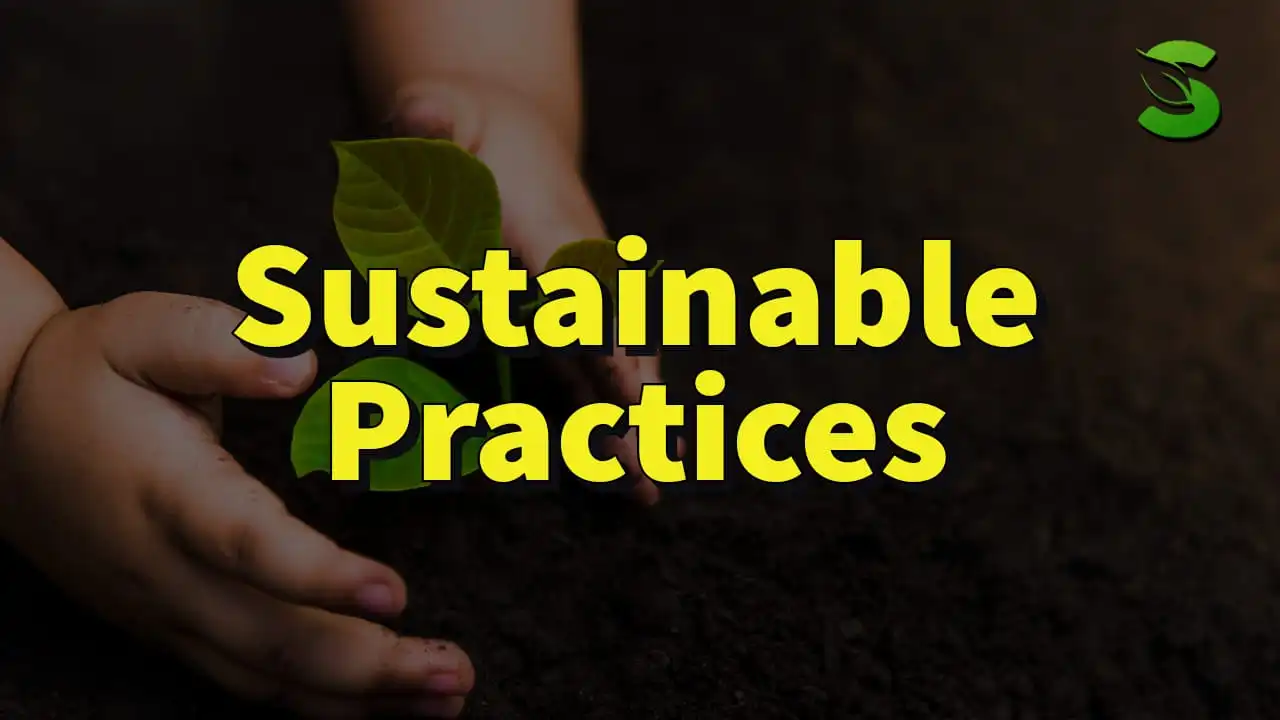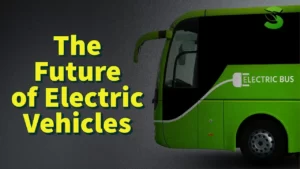In a world where environmental concerns are at the forefront, adopting sustainable practices is not just a choice but a responsibility. Discover the holistic approach towards embracing a greener lifestyle and contributing to a sustainable future.
Understanding Sustainable Practices
Defining Sustainability:
Sustainability, in the context of which is a sustainable practice?, transcends being a mere environmental catchphrase; it’s a guiding principle for responsible living that encompasses social, economic, and ecological dimensions. Let’s unpack the layers and understand the essence of sustainability.
Green Energy Revolution:
In the quest for which is a sustainable practice?, the Green Energy Revolution stands as a beacon of hope, illuminating the path towards a cleaner, greener future. This transformative movement champions the adoption of renewable energy sources, challenging the traditional reliance on fossil fuels and ushering in a new era of sustainability.
Solar Power: Harnessing the Sun’s Brilliance
At the forefront of the Green Energy Revolution is the widespread adoption of solar power. Solar panels, comprised of photovoltaic cells, convert sunlight into electricity. This clean and abundant source of energy not only reduces dependence on finite fossil fuels but also curtails harmful greenhouse gas emissions, making it a cornerstone of sustainable practices.
Wind Energy: Riding the Gentle Breezes
Harnessing the power of the wind through wind turbines is another key player in the green energy landscape. As the blades spin, they generate electricity without emitting pollutants. Embracing wind energy contributes significantly to reducing carbon footprints and mitigating the impacts of climate change.
Hydropower: Tapping into Nature’s Flow
Hydropower, derived from the energy of moving water, is a longstanding and reliable source of renewable energy. Dams and turbines convert the kinetic energy of flowing water into electricity. While environmental considerations are essential, well-designed hydropower projects can provide a steady and sustainable energy supply.
Geothermal Energy: Earth’s Inner Heat
Delving beneath the Earth’s surface, geothermal energy taps into the planet’s internal heat. This involves harnessing steam or hot water reservoirs to generate electricity. As a continuous and reliable energy source, geothermal power contributes to the diversification of the energy matrix, reducing dependence on non-renewable resources.
Biomass: Tapping into Organic Matter
Derived from organic materials like wood, crop residues, and waste, biomass energy is a versatile player in the green energy revolution. By converting biological matter into fuel, biomass provides a renewable alternative to traditional fossil fuels, offering a sustainable solution to both energy generation and waste management.
Advancements in Energy Storage
The Green Energy Revolution isn’t just about production; it’s also about smart consumption. Energy storage technologies, such as advanced batteries, play a pivotal role in optimizing the use of renewable energy. They enable the capture of excess energy during peak production times, ensuring a stable and consistent power supply even when the sun isn’t shining or the wind isn’t blowing.
Global Collaboration for a Sustainable Tomorrow
Crucially, the Green Energy Revolution transcends borders. Nations worldwide are recognizing the urgency of transitioning to sustainable energy sources and are investing in research, development, and international collaborations. The collective goal is to create a global energy landscape that is not only sustainable but also inclusive and resilient.
Eco-Friendly Transportation:
Sustainable living extends beyond our homes; it encompasses the way we move through the world. Eco-friendly transportation has emerged as a powerful solution to mitigate the environmental impact of traditional commuting methods.
Embracing Electric Vehicles (EVs)
Electric vehicles (EVs) stand at the forefront of the eco-friendly transportation revolution. By utilizing electricity as their primary power source, EVs drastically reduce carbon emissions compared to their gasoline counterparts. The silent hum of an electric motor cruising down the road signifies not just a mode of transport but a commitment to sustainable practices.
Pedal Power: Embracing Bicycles
Rediscover the joy of pedaling and reduce your carbon footprint simultaneously. Bicycles, be they traditional or electric, offer a green alternative for short-distance commuting. They not only contribute to personal health but also promote a cleaner, more sustainable urban environment.
Public Transport: A Collective Commitment
Opting for public transportation is a simple yet impactful choice for sustainable living. Buses, trains, and trams efficiently move large numbers of people, significantly reducing the number of individual vehicles on the road. By choosing public transport, individuals contribute collectively to reduced traffic congestion and lower emissions.
Carpooling: Sharing the Ride
Carpooling embodies the spirit of community and sustainability. By sharing rides with others headed in the same direction, individuals can significantly cut down on the number of vehicles on the road. This not only reduces emissions but also eases traffic congestion, creating a win-win for both the environment and commuters.
Investing in Sustainable Infrastructure
Supporting the development of sustainable transportation infrastructure is pivotal. Governments and municipalities play a crucial role in creating bike lanes, promoting EV charging stations, and investing in efficient public transport systems. By advocating for and utilizing these developments, individuals actively participate in the larger movement towards sustainable practices.
The Future of Transportation: Innovations on the Horizon
Stay tuned for exciting developments in sustainable transportation. From solar-powered vehicles to advancements in battery technology, the future promises even more eco-friendly options. As the world shifts towards sustainable practices, transportation is evolving to become not just a means of getting from A to B but a positive force for environmental change.
Eco-friendly transportation isn’t just a buzzword; it’s a tangible, impactful way to contribute to a sustainable future. Whether it’s choosing an electric vehicle, pedaling to work, or supporting public transport initiatives, every decision counts. In the realm of sustainable practices, the way we move matters.
Embracing Sustainable Practices at Home
In the pursuit of which is a sustainable practice?, our homes serve as the epicenter of change. Adopting sustainable practices within the confines of our living spaces not only benefits the environment but also fosters a conscious and responsible way of life. Let’s explore how we can turn our homes into havens of sustainability.
Zero-Waste Living: A Mindful Approach
Embark on the journey of zero-waste living, where every decision is a conscious choice to reduce environmental impact. This involves minimizing single-use plastics, opting for reusable alternatives, and embracing a circular economy. By carefully considering our consumption habits, we can significantly lessen the waste generated and contribute to a healthier planet.
Smart Home Technologies: Merging Comfort with Efficiency
The integration of smart technologies into our homes marks a significant stride towards sustainability. From energy-efficient appliances to smart thermostats that optimize heating and cooling, these technologies not only enhance our comfort but also reduce energy consumption. Embrace the convenience of modern living while treading lightly on the Earth.
Organic Gardening: Cultivating Sustainable Bounty
Transform your backyard into a thriving ecosystem with organic gardening. By eschewing harmful pesticides and synthetic fertilizers, you contribute to soil health and biodiversity. Harvesting your produce not only ensures freshness but also minimizes the environmental impact associated with traditional agriculture. It’s a delicious way to align with which is a sustainable practice? right at home.
Energy-Efficient Lighting: Illuminating Responsibly
Simple changes in lighting can make a significant difference. Opt for energy-efficient LED bulbs, which not only last longer but also consume less electricity. This small adjustment not only reduces your carbon footprint but also trims down electricity bills, proving that sustainable practices can be both environmentally friendly and economically savvy.
Water Conservation: A Drop in the Right Direction
Conserve water with mindful practices. Fix leaks promptly, install water-saving devices, and reconsider landscaping choices to minimize water usage. Every drop saved contributes to sustainable water management, addressing a critical aspect of which is a sustainable practice? within the home.
Eco-Friendly Cleaning Products: Nurturing Home and Earth
Make the switch to eco-friendly cleaning products. Traditional cleaners often contain harmful chemicals that can adversely affect both human health and the environment. By choosing biodegradable and non-toxic alternatives, you create a safer living space while endorsing sustainable manufacturing practices.
Sustainable Materials: Building a Greener Home
When renovating or furnishing your home, opt for sustainable materials. From bamboo flooring to recycled furniture, choices abound that minimize the environmental impact of construction and manufacturing. By making informed decisions, you contribute to a market demand for eco-friendly alternatives.
Educational Initiatives: Fostering a Culture of Sustainability
Finally, share your journey towards sustainable living with family and friends. Education is a powerful tool for change. By fostering a culture of sustainability within your home, you not only create a positive ripple effect but also contribute to a larger societal shift towards which is a sustainable practice?.
Business Sustainability: Making a Difference
In the dynamic landscape of contemporary commerce, business sustainability has emerged not just as a trend but as an imperative. The notion of which is a sustainable practice? is not confined to individual choices; it extends its roots into the very fabric of businesses. Let’s explore how businesses, both big and small, can be catalysts for positive change through sustainable practices.
Corporate Social Responsibility (CSR): Beyond Profit Margins
Central to business sustainability is the concept of Corporate Social Responsibility (CSR). It transcends profit margins, urging businesses to consider their impact on society and the environment. From supporting local communities to championing charitable initiatives, businesses wield considerable influence in shaping a more equitable world.
Sustainable Supply Chains: Ethical Foundations
Business sustainability necessitates a reevaluation of supply chain practices. Companies are increasingly scrutinizing every link in their supply chains, aiming to minimize environmental impact and uphold ethical standards. Sustainable sourcing, fair labor practices, and eco-friendly production methods are becoming the cornerstones of a responsible supply chain.
Renewable Energy Adoption: Powering Progress Responsibly
Embracing renewable energy sources is a powerful stride in business sustainability. From solar panels on rooftops to wind turbines powering operations, businesses are recognizing the importance of transitioning to cleaner energy alternatives. Not only does this contribute to which is a sustainable practice?, but it also positions companies as champions of environmental stewardship.
Waste Reduction Strategies: From Linear to Circular Economies
Shifting from a linear to a circular economy is pivotal for business sustainability. This involves minimizing waste through recycling, reusing materials, and adopting circular production models. By implementing waste reduction strategies, businesses play a crucial role in mitigating the environmental impact associated with traditional, resource-intensive practices.
Employee Well-being: Nurturing Human Capital
Sustainability within businesses extends to the well-being of their most valuable asset—their employees. Beyond competitive salaries, businesses are increasingly investing in employee wellness programs, flexible work arrangements, and initiatives that foster a healthy work-life balance. Prioritizing employee well-being not only enhances productivity but also aligns with the broader ethos of which is a sustainable practice?.
Stakeholder Engagement: A Collaborative Approach
Engaging with stakeholders is integral to business sustainability. This includes not only customers and employees but also the communities in which businesses operate. Transparent communication and collaboration with stakeholders build trust and ensure that business practices align with the values of the broader society.
Innovation for Sustainability: Pioneering Change
Businesses at the forefront of sustainability are often pioneers of innovation. Whether through the development of eco-friendly products or the implementation of cutting-edge technologies, these businesses showcase that profitability and sustainability can go hand in hand. Innovation becomes a driving force for positive change.
Regulatory Compliance and Beyond
Compliance with environmental regulations is a baseline for business sustainability. However, forward-thinking businesses go beyond mere compliance. They actively seek ways to exceed regulatory standards, positioning themselves as leaders in ethical business practices and stewards of the environment.
Transparency and Accountability
Ultimately, transparency and accountability are the cornerstones of business sustainability. Businesses that openly communicate their sustainability goals, progress, and challenges foster a culture of accountability. Such transparency not only builds trust with consumers but also encourages continuous improvement.
FAQs about Sustainable Practices
Q: Can I make a difference with small lifestyle changes? Absolutely! Small changes like reducing single-use plastics, conserving water, and using energy-efficient bulbs collectively contribute to sustainable practices.
Q: How can businesses contribute to Sustainable Practices? Businesses can adopt eco-friendly processes, invest in renewable energy, and implement sustainable supply chain practices to make a substantial impact.
Q: Is Sustainable Practices living expensive? While initial investments may be higher, the long-term benefits and reduced ecological footprint make sustainable living cost-effective.
Q: Can sustainable practices address climate change? Yes, adopting sustainable practices is crucial in mitigating climate change by reducing carbon emissions and promoting environmental conservation.
Q: Are there government initiatives supporting Sustainable Practices? Many governments worldwide have initiated policies and incentives to promote sustainable practices, encouraging individuals and businesses to contribute to a greener planet.
Q: How can I convince others to adopt sustainable practices? Lead by example, share success stories, and highlight the positive impact of sustainable practices to inspire others to join the movement.
Conclusion:
In a world facing environmental challenges, embracing sustainable practices is not just a trend but a necessity. From personal choices to corporate strategies, each step towards sustainability contributes to a healthier, greener planet. Let’s collectively embark on the journey of making which is a sustainable practice? a way of life.
ALSO READ |Recycling Solar Batteries for a Sustainable Future







